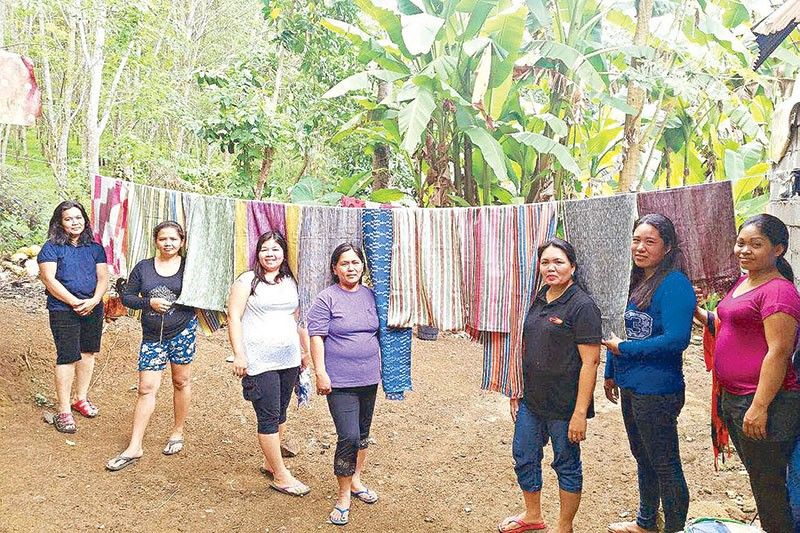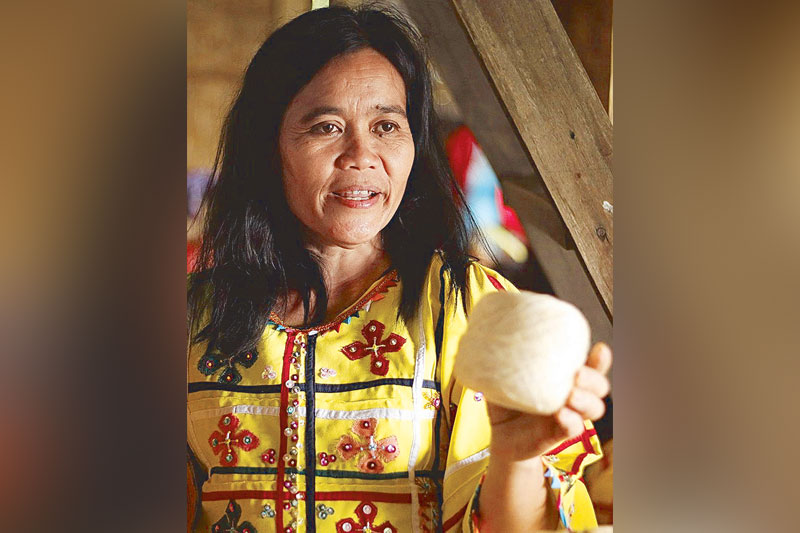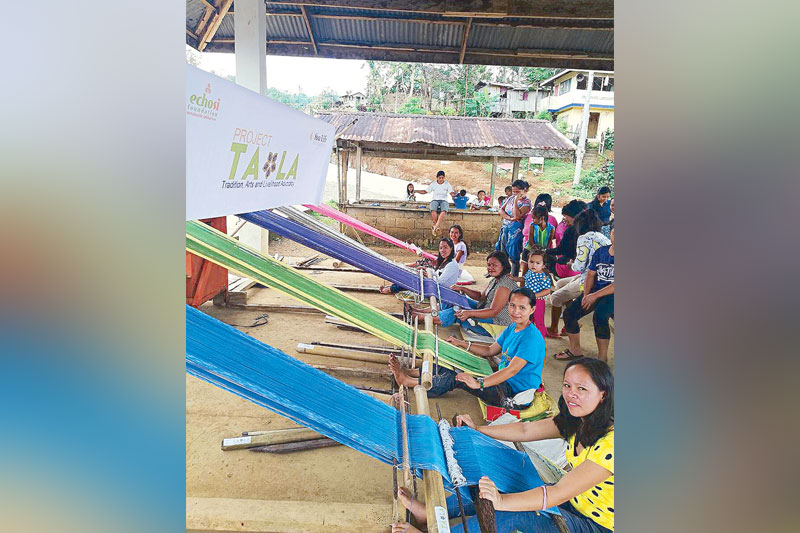‘Collabs’


Collaboration is the way to go today. Each partner shares his or her unique values and resources aligned to shared goals, often altruistic and difficult to attain if each one tried to do things by oneself. The proliferation of such “collabs” in all parts of life today—business, corporate, retail, development, public-private partnerships create the precious capital of a strong network that supports the goals of one’s unique “tribe.”
And literally to the “tribe” of the indigenous Bagobos in the barangays of Alegre and Bitaug in the province of Davao del Sur, such a collab group came together. The project called Tala (Tradition, Arts and Livelihood Advocacy) that we undertook as the ECHOsi Foundation’s textile product development project, funded by Sun Life Foundation that included their financial literacy volunteerism of their company’s employees. A year ago, we didn’t know what would come out of this, but what we banked on was the fact that we had a strong woman leader amongst the Tagabawa, a sub-tribe of the Bagobos, one of the largest tribes in Mindanao that occupy the protected areas around Mt. Apo.
Since 2015 when we first met her through the Canada-funded Philippine Commission on Women’s GREAT Project 1, master weaver Vivencia Mamites has been dynamically expanding her base of weavers as the GREAT Women Brand Platform continues to actively help them market and sell their inabal.
It was the inabal that brought us all together. Inabal is a traditional ancestral cloth of her tribe. This cloth was customarily used as the garment for ancestral royalty and handed down through generations. And it was this same inabal that also organically moves us to put together different partnerships. The Sun Life’s involvement allowed ECHOsi Foundation, led by GREAT Women’s textile specialist Candy Sy, to strengthen its textile template into the full textile supply chain specific to a cultural indigenous community. Due to lack of sustainable livelihood opportunities for weaving inabal, only a handful of Bagobo-Tagabawa tribeswomen are interested in weaving as an alternative source of income.

Great Women Bagobo weaver Vivencia Mamites. Photo by Dariel Quiogue
The Department of Trade and Industry has trained 28 Bagobo-Tagabawa women to do handloom weaving. Of the 28 trained weavers, only 15 were still engaged in weaving as there were only two handlooms available in the community and they did not have an assured market for their products. Thus, the Tala Project was designed first, to preserve the cultural heritage; second, to further enhance the skills of the 15 trained weavers through ECHOsi’s product design laboratory; and third to establish a ready market for their products and unique capacity through the GREAT Women Brand Platform. So the project gave them 20 pieces of backstrap looms and 10 bang-bangs (an essential part of the loom, which is used to expand the width of the fabrics). The unique outcome this time was they wove in pure cotton rather than their traditional abaca. This was a breakaway strategy for the group especially since they have never woven using cotton in the past. The design was left to them, so the capsule collection was to introduce something new—cotton yarns.
Important, too, was the empowerment of the master weavers to train and monitor the skills development of the project beneficiaries as well as to coach and mentor them. Then two Sun Life financial advisers Mr. and Mrs. Doods Gumanid braved the travel to the hinterland for two days of capacity-building workshops that included determining priority household expenses, the importance of saving money, the formula to properly save money to achieve the family’s dreams and aspirations, and ways to increase income through other income-generating activities. So it was not only the weavers who came but also other members of their families. It hoped to strengthen the capacity of the women to assert their rights, especially in their participation in decision-making and in the performance of their roles as culture-keepers by preserving and transmitting knowledge and skills in inabal weaving to other tribeswomen.

The Tala Project.
Even their community production site and center has become a focal point from where they can operate more efficiently for economies of production and marketing. There, too, they can transmit traditional knowledge plus livelihood skills to the younger generation. From there, the weavers and other community leaders can now organize themselves into a producers’ cooperative or association, a potent tool and effective channel for financing or credit; as well as a vehicle to promote and revitalize the age-old inabal weaving industry to make it competitive and attuned to the present time. Organizing a cooperative for the Bagobo-Tagabawa tribe will also be timely because a collective mark can only be owned by an association or cooperative.
Such participatory collaborations allow everyone to dive deeper into what the community really needs and what works for them. This is the backroom supply-chain-story of that beautiful GREAT Women Philippine handmade textile seen in the market today. It is the work from behind the scene that is changing lives towards more sustainability. Designers always lament the fact that production capacity is never reached by our indigenous groups. Well it is because systems for their capacities have not been sensitive to that which they can produce.
Birthing a continuing culture was not just for the Bagobos. It was also for Sun Life Foundation wanting to try something new in their CSR. Not just do financial literacy but to see other development projects that link strongly to sustainable livelihood to the people who so badly need the financial literary support, the training and the market access for their products. And for us at ECHOsi Foundation and the GREAT Women Brand Platform, we understand now that the road to market is guided by sensitive cultural and gender lenses to allow these handmade textile find their own niche.















